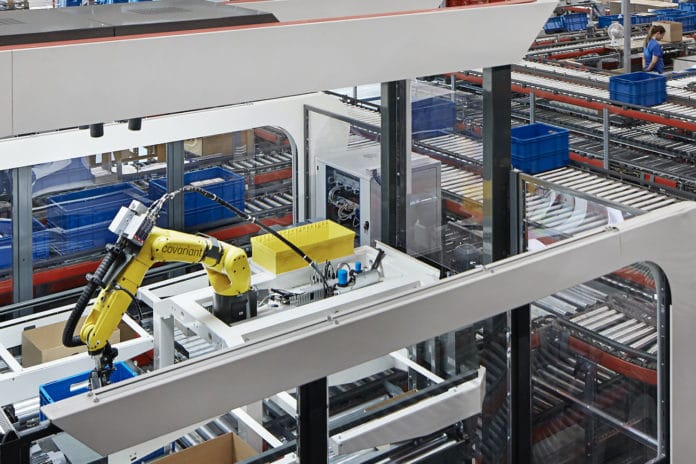A Berkeley-based startup, Covariant.ai, has developed a warehouse robot with AI support that can handle the classification of objects of various sizes and shapes, no worse than humans. This success of the technology broadly opens the doors to robotic sorting in warehouses and beyond.
Currently, this AI-powered robotic arm is being tested in the Obeta warehouse on the outskirts of Berlin (Germany). The warehouse is managed by an automated logistics company called KNAPP, which is Covariant’s first partner.
Using three suction cups at the end of a long ‘arm’, the warehouse robot classifies objects with high speed and precision. This job was previously only for people. Currently available warehouse robots cannot handle the task of classifying multiple items – from clothing and shoes to electronic equipment – so that each product can be packaged and shipped to customers according to their purpose.
“Covariant’s AI is able to detect glossy, shiny, and reflective products, including products in plastic bags. The product range is nearly unlimited, and the robotic picking station has the same or better performance than humans,” Peter Puchwein, vice president of KNAPP, explains in an interview for IEEE Spectrum.
Read more: Robotic hand capable of grasping objects without touching them
There are usually two categories of tasks in warehouses – moving in space and grasping items and placing them in the right place. Robots have long been involved in warehouse work, but usually, their tasks were limited to automating the first type of work. Automating hand movements is much more complicated because the technology must quickly adapt to a wide variety of shapes and sizes of products with a constant change in position in space. If the Covariant manipulator withstands the test in real conditions, it is quite capable of permanently changing warehouse logistics.
The company calls its machine intelligence the Covariant Brain because it is a single, huge centralized neural network that manages all machines. This is in many ways remarkable news, not only in the sense that it is independent of the hardware itself and can be coupled with most robotic arms on the market but especially in the detail that it is clearly capable of high levels of generalization.
